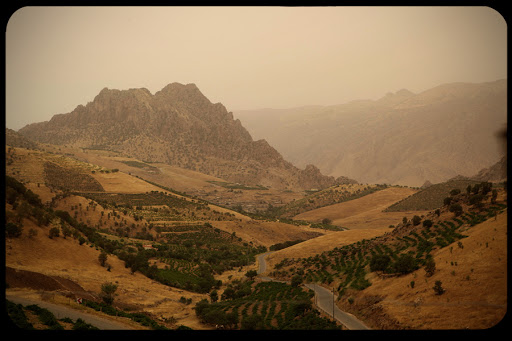As we watch the unfolding catastrophe overtaking Christianity in Iraq, our first concern must of course be with the welfare of present-day victims. But we should never forget just who these people are, and the deep roots of the churches they represent. Some of the legends associated with that tradition make amazing claims for Christian origins, claims that might just possibly be true.
In the early Christian era, Mesopotamia (Iraq) was a thriving center of rabbinic Judaism, and throughout the first millennium it was the intellectual capital of that faith. Given the Jewish background, naturally we find very early Christian settlements in Iraq. Within the Persian empire, the greatest seat of church power was at the capital Seleucia-Ctesiphon. The city’s bishop – later the patriarch – ruled from there until the move to Baghdad in early Islamic times.
Eastern church tradition even claimed that early Christian migrants to Iraq included relatives of Jesus himself. Please bear with me when I report these claims, and don’t accuse me of becoming Dan Brown. I don’t claim precise validity for much of the later source material in terms of the details they offer of first or second century history, or of any particular names, but the general picture is surprisingly plausible. It’s totally different from, say, medieval legends suggesting that Mary Magdalene died in France, or Joseph of Arimathea in England.
As I describe in my “Lost History of Christianity,” around 1500, the Church of the East (the “Nestorians”) described the apostolic succession of its patriarchs or Katholikoi. It began with Addai and Mari, of the apostolic generation:
-Addai was buried in Edessa.
-Mârî (was buried) in the convent of Kônî.
The Syriac churches regard these men as their special patrons. The Syriac Anaphora of the Apostles Addai and Mari is the oldest Christian liturgy still in use.
We then hear of the third incumbent, one “Abrîs … he was of the laying on of hands of Antioch.” After that,
– Abraham was of the laying on of hands of Antioch; he was descended from the family of Jacob the son of Joseph; his grave is in Ctesiphon.
– James, of the laying on of hands of Antioch, was also of the family of Joseph the husband of Mary; his grave is in Ctesiphon.
– Ahâ-d´abûhî was of the laying on of hands of Antioch; his grave is in Ctesiphon.
Later incumbents were “of the laying on of hands of Ctesiphon,” and thereafter, the Katholikoi were based in that city until they formally moved to Baghdad, around 780.
Might this account conceivably be rooted in historical fact?
Briefly, it states that Christianity reached Edessa very soon after the death of Jesus, and that the earliest missionaries stemmed from Antioch. Given the relationship of the cities and trade routes, that general pattern is overwhelmingly likely. It also suggests a Christian presence based in Ctesiphon from the early second century, which meshes beautifully with the Jewish history we know.
According to this eastern tradition, the third and fourth leaders of this church were of the family of Joseph, the husband of Mary. Early historians like Eusebius confirm that kinship with Jesus gave a special warrant for authority in the earliest church. Near the end of the first century, the Roman emperor Domitian sought out the “relatives of the Lord”, the desposynoi, whom he suspected of sedition. On examination, though, the surviving relatives proved to be hard-working small farmers whom the emperor judged to be unworthy of his attention, and so he let them live. They apparently lived in Palestine or Syria.
That investigation might well have persuaded any remaining family members to migrate beyond the limits of Roman power, to Parthian Ctesiphon, which is just what the Nestorian record suggests. The story also fits well with what we know about Jews relocating to Babylonia in these same years. If it is not true of that family, such a relocation would have fitted other similar members of the Jesus movement in those same years.
By the by, in 1 Peter 5, the author ends with regards from “She who is in Babylon,” which has become a controversial point in denominational polemic. Some Protestant writers take it literally, suggesting that Peter lived and died in Babylon rather than Rome, making nonsense of Papal claims to inherit his authority. An overwhelming weight of early tradition, though, confirms Peter’s links to Rome, while Babylon was a familiar early code-word for Rome.
Peter never set foot in Babylon or Iraq. But some of Jesus’s kin might have done.
Philip Jenkinsis a Distinguished Professor of History at Baylor University and author of The Great and Holy War: How World War I Became a Religious Crusade.

